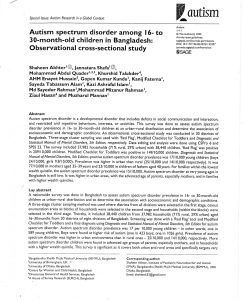
Fragile X syndrome (FXS) is the most common known cause of inherited intellectual impairment. This syndrome is caused when a gene, FMR1, becomes altered or mutated. People with FXS have a range of intellectual, behavioural and physical changes. Though FXS occurs in both genders, males are more frequently affected than females, and generally with greater severity.
Features of Fragile X Syndrome in Males
- Cognitive: Disabilities in FXS include a range from subtle to moderate learning disabilities to more severe intellectual disabilities with autism. Delayed milestones such as walking, talking and toilet training, and difficulty with mathematics may be seen with these children.
- Physical features may include large ears, long face, soft skin and large testicles (called “macroorchidism”) in post-pubertal males. Connective tissue problems may include Heart murmurs, ear infections, flat feet, high arched palate, double-jointed fingers and hyper-flexible joints.
- Behavioural characteristics can include ADD, ADHD, autism and autistic behaviours, social anxiety, hand-biting and/or flapping, poor eye contact, and increased risk for aggression. They become easily overwhelmed by sensory stimuli such as crowds, noises or light touch.
- No one individual will have all the features of FXS, and some features, such as a long face and macroorchidism, are more common after puberty.
Features of Fragile X Syndrome in Females
- The characteristics seen in males can also be seen in females, though females often have milder intellectual disability and a milder presentation of the syndrome’s behavioural and physical features.
- About one-third of females with FXS have a significant intellectual disability.
- Others may have moderate or mild learning disabilities, emotional/mental health issues, general anxiety and/or social anxiety.
- A small percentage of females will have no apparent signs of the condition—intellectual, behavioural or physical. These females are often identified only after another family member has been diagnosed.
There are tests which help in diagnosing FXS both prenatally and after the birth of the child.
There is no cure available for FXS right now. Treatment is primarily through various forms of therapy such as speech, special education, and physical and occupational therapy. Medication is often helpful in managing the hyperactivity and short attention spans, or aggression, depression and anxiety.




 IPNA wants to create a world where children with developmental disabilities and their parents can get their questions answered and their needs met in a caring environment.
IPNA wants to create a world where children with developmental disabilities and their parents can get their questions answered and their needs met in a caring environment.